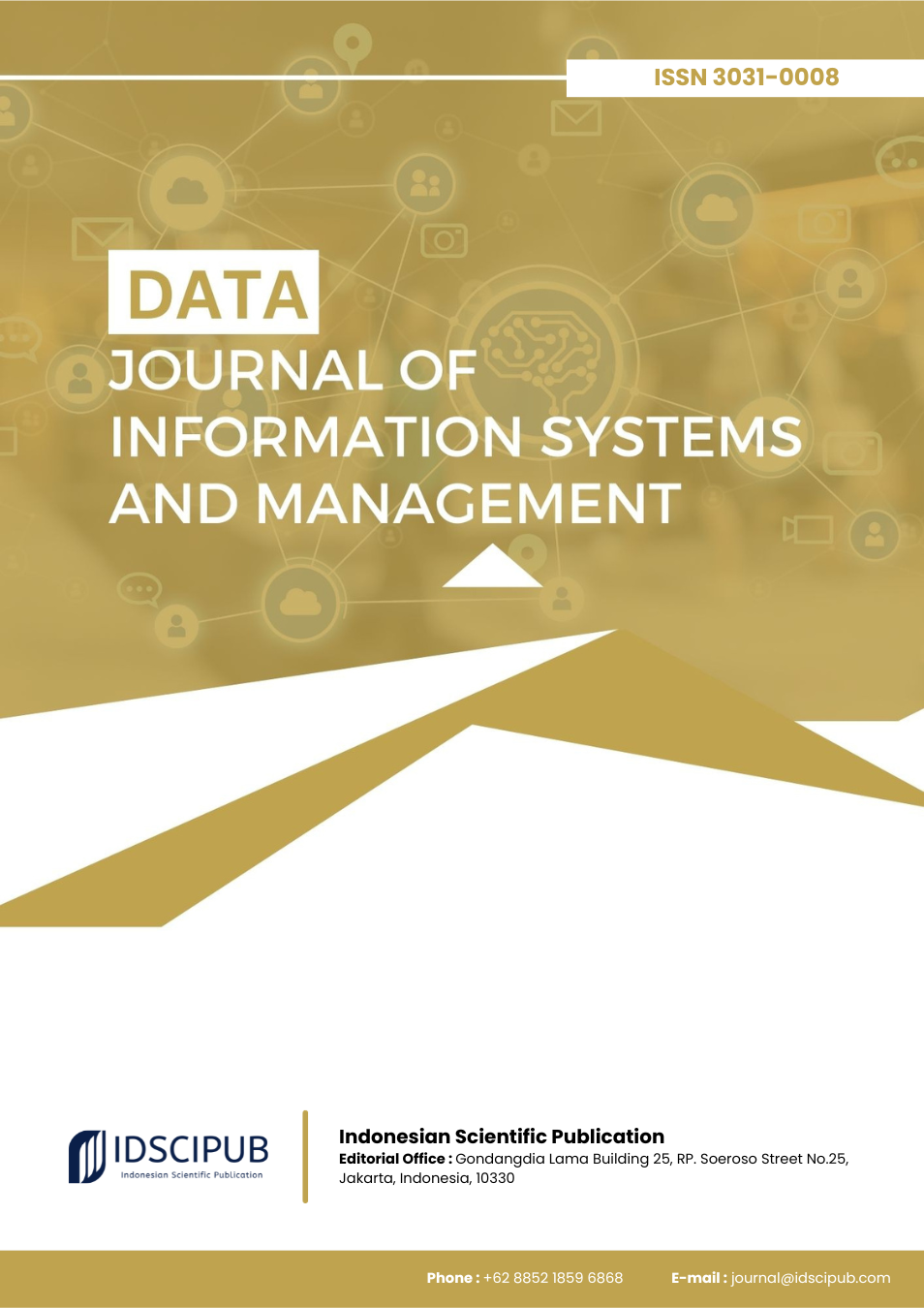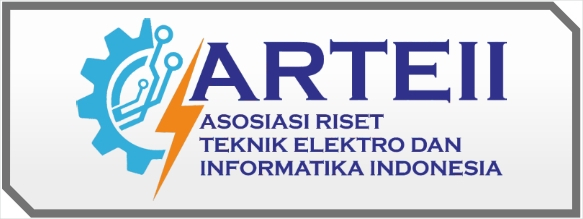Task Aligned Technology: Enhancing Cross Unit Collaboration in Remote Work Environments
DOI:
https://doi.org/10.61978/data.v3i3.1089Keywords:
Remote Work, IT Media Fit, Cross Unit Collaboration, Media Synchronicity Theory, Digital Communication Tools, Hybrid TeamsAbstract
The growing prevalence of remote and hybrid work models has transformed how organizations coordinate tasks and collaborate across functional units. This study investigates whether IT media fit moderates the relationship between remote work intensity and cross unit collaboration. Drawing on Media Synchronicity Theory (MST), the research posits that communication media must align with task requirements particularly synchronicity needs to enhance collaboration outcomes. A quasi experimental, longitudinal design was used, analyzing weekly team level data from digital trace logs (Slack, Microsoft Teams) and surveys assessing remote work intensity and IT media alignment. The study employed Generalized Linear Mixed Models (GLMM) with interaction terms to evaluate the moderating effect of IT media fit. Key findings indicate that remote work alone does not significantly improve collaboration metrics such as network centrality or cross functional reply rates. However, in conditions of high IT media fit, remote work intensity positively correlates with more robust cross unit collaboration. These results were robust across multiple model specifications and validated through lagged temporal analysis, bias checks, and alternative statistical techniques. This research extends MST by incorporating the emotional and contextual dimensions of digital communication tools and emphasizing the need for tool task synchronicity in remote settings. The study provides actionable recommendations for organizations, including aligning communication tools with specific task types, training teams in digital collaboration practices, and designing adaptive communication policies. As digital collaboration becomes central to modern organizational life, the strategic fit between media and task emerges as a vital determinant of remote work effectiveness.
References
Adekoya, O. D., Adisa, T. A., & Aiyenitaju, O. (2022). Going Forward: Remote Working in the Post-Covid-19 Era. Employee Relations, 44(6), 1410–1427. https://doi.org/10.1108/er-04-2021-0161 DOI: https://doi.org/10.1108/ER-04-2021-0161
Adikaram, A. S., & Naotunna, N. P. G. S. I. (2023). Remote Working During COVID-19 in Sri Lanka: Lessons Learned And what the Future Holds. Employee Relations, 45(4), 1035–1056. https://doi.org/10.1108/er-06-2022-0259 DOI: https://doi.org/10.1108/ER-06-2022-0259
Aleem, M., Sufyan, M., Ameer, I., & Mustak, M. (2023). Remote Work and the COVID-19 Pandemic: An Artificial Intelligence-Based Topic Modeling and a Future Agenda. Journal of Business Research, 154, 113303. https://doi.org/10.1016/j.jbusres.2022.113303 DOI: https://doi.org/10.1016/j.jbusres.2022.113303
Allen, S., & Williams, P. (2021). Remote Oral Doctoral Dissertation Defenses in Management, Leadership, and Business: Benefits, Pedagogy, and Practices. Management Teaching Review, 7(3), 208–225. https://doi.org/10.1177/23792981211013024 DOI: https://doi.org/10.1177/23792981211013024
Beckel, J. L. O., & Fisher, G. G. (2022). Telework and Worker Health and Well-Being: A Review and Recommendations for Research and Practice. International Journal of Environmental Research and Public Health, 19(7), 3879. https://doi.org/10.3390/ijerph19073879 DOI: https://doi.org/10.3390/ijerph19073879
Bilderback, S. (2024). I Will See You in the Summer: Assessing the Cognitive Impact of Social Media on Employee Engagement. Strategic Hr Review, 23(6), 206–210. https://doi.org/10.1108/shr-05-2024-0033 DOI: https://doi.org/10.1108/SHR-05-2024-0033
Buggenhout, N. V., & Broeck, W. V. d. (2023). Media Users’ and Professionals’ Responses to Personal Data Receipts: A Mixed Methods Study. Information Polity, 28(1), 97–115. https://doi.org/10.3233/ip-211500 DOI: https://doi.org/10.3233/IP-211500
Califf, C. B., Stumpf, T., & Frye, J. (2020). Revisiting Technology and Flow: A Call for an Alternative Perspective and Directions for the Future. https://doi.org/10.24251/hicss.2020.753 DOI: https://doi.org/10.24251/HICSS.2020.753
Cao, X., Guo, X., Vogel, D., & Zhang, X. (2016). Exploring the Influence of Social Media on Employee Work Performance. Internet Research, 26(2), 529–545. https://doi.org/10.1108/intr-11-2014-0299 DOI: https://doi.org/10.1108/IntR-11-2014-0299
Chen, J., Muscoloni, A., Abdelhamid, I., Wu, Y., & Cannistraci, C. V. (2024). Generalizing the AUC-ROC for Unbalanced Data, Early Retrieval and Link Prediction Evaluation. https://doi.org/10.20944/preprints202209.0277.v2 DOI: https://doi.org/10.20944/preprints202209.0277.v2
Choudhury, P. (. (2020). Work‐from‐anywhere: The Productivity Effects of Geographic Flexibility. Strategic Management Journal, 42(4), 655–683. https://doi.org/10.1002/smj.3251 DOI: https://doi.org/10.1002/smj.3251
Dailey, S. L. (2022). “Define Yourself. . . #EXSTpride”: Exploring an Organizational Hashtag Through the Structurational Model of Identification. Management Communication Quarterly, 37(1), 127–143. https://doi.org/10.1177/08933189221095597 DOI: https://doi.org/10.1177/08933189221095597
Davis, S., Antonio, M., Smith, M. A., Burgener, P., Lavallee, D. C., Price, M., Fletcher, S., & Lau, F. (2022). Paving the Way for Electronic Patient-Centered Measurement in Team-Based Primary Care: Integrated Knowledge Translation Approach. Jmir Formative Research, 6(3), e33584. https://doi.org/10.2196/33584 DOI: https://doi.org/10.2196/33584
Evanoff, B., Yung, M., Buckner‐Petty, S., Andersen, J. H., Roquelaure, Y., Descatha, A., & Dale, A. M. (2019). The CONSTANCES Job Exposure Matrix Based on Self-Reported Exposure to Physical Risk Factors: Development and Evaluation. Occupational and Environmental Medicine, 76(6), 398–406. https://doi.org/10.1136/oemed-2018-105287 DOI: https://doi.org/10.1136/oemed-2018-105287
Faraco, R. M., Broberg, O., & Duarte, F. (2024). The Impact of Covid-19 on Support Teams. Work, 1–22. https://doi.org/10.3233/wor-230565 DOI: https://doi.org/10.3233/WOR-230565
Feng, Y., Park, J., & Feng, M. (2023). What Is Holding Back Business Process Virtualization in the Post-Covid-19 Era? Based on Process Virtualization Theory (PVT). Frontiers in Psychology, 14. https://doi.org/10.3389/fpsyg.2023.1084180 DOI: https://doi.org/10.3389/fpsyg.2023.1084180
Gajendran, R. S., Ponnapalli, A. R., Wang, C., & Javalagi, A. A. (2024). A Dual Pathway Model of Remote Work Intensity: A Meta‐analysis of Its Simultaneous Positive and Negative Effects. Personnel Psychology, 77(4), 1351–1386. https://doi.org/10.1111/peps.12641 DOI: https://doi.org/10.1111/peps.12641
Imai, T., Kuwahara, K., Miyamoto, T., Okazaki, H., Nishihara, A., Kabe, I., Mizoue, T., & Dohi, S. (2016). Validity and Reproducibility of Self‐reported Working Hours Among Japanese Male Employees. Journal of Occupational Health, 58(4), 340–346. https://doi.org/10.1539/joh.15-0260-oa DOI: https://doi.org/10.1539/joh.15-0260-OA
Islam, T., & Ahmed, I. (2018). Mechanism Between Perceived Organizational Support and Transfer of Training. Management Research Review, 41(3), 296–313. https://doi.org/10.1108/mrr-02-2017-0052 DOI: https://doi.org/10.1108/MRR-02-2017-0052
Kawahito, K., Yamaguchi, H., Nakanishi, Y., Kawaminami, S., Tabata, R., Okura, Y., & Tani, K. (2023). Feelings Toward Medicine in Remote Areas Among Medical Students Aiming to Become Generalists: A Comparison With Other Specialists. The Journal of Medical Investigation, 70(1.2), 129–134. https://doi.org/10.2152/jmi.70.129 DOI: https://doi.org/10.2152/jmi.70.129
Kemell, K., & Saarikallio, M. (2023). Hybrid Work Practices and Strategies in Software Engineering-Emerging Software Developer Experiences. Ieee Access, 11, 112861–112876. https://doi.org/10.1109/access.2023.3322934 DOI: https://doi.org/10.1109/ACCESS.2023.3322934
Maghlaperidze, E., Kharadze, N., & Куспляк, Г. (2021). Development of Remote Jobs as a Factor to Increase Labor Efficiency. Journal of Eastern European and Central Asian Research (Jeecar), 8(3), 337–348. https://doi.org/10.15549/jeecar.v8i3.669 DOI: https://doi.org/10.15549/jeecar.v8i3.669
Müller, T., & Niessen, C. (2019). Self‐leadership in the Context of Part‐time Teleworking. Journal of Organizational Behavior, 40(8), 883–898. https://doi.org/10.1002/job.2371 DOI: https://doi.org/10.1002/job.2371
Munge, B., Thomas, G., & Heck, D. (2017). Outdoor Fieldwork in Higher Education: Learning From Multidisciplinary Experience. Journal of Experiential Education, 41(1), 39–53. https://doi.org/10.1177/1053825917742165 DOI: https://doi.org/10.1177/1053825917742165
Naeem, M. (2020). Understanding the Role of Social Media in Organizational Change Implementation. Management Research Review, 43(9), 1097–1116. https://doi.org/10.1108/mrr-07-2019-0336 DOI: https://doi.org/10.1108/MRR-07-2019-0336
Puzia, M., Green, J., Clarke, C., Cloonan, S., & Huberty, J. (2022). Examining the Associations of Using the Calm App With Team Mindfulness and Psychological Safety in Remote Workers. Environmental and Occupational Health Practice, 4(1), n/a. https://doi.org/10.1539/eohp.2022-0001-oa DOI: https://doi.org/10.1539/eohp.2022-0001-OA
Qu, Y., Hu, W., Huang, J., Tan, B., Ma, F., Xing, C., & Yuan, L. (2024). Ultra-Processed Food Consumption and Risk of Cardiovascular Events: A Systematic Review and Dose-Response Meta-Analysis. Eclinicalmedicine, 69, 102484. https://doi.org/10.1016/j.eclinm.2024.102484 DOI: https://doi.org/10.1016/j.eclinm.2024.102484
Rachman, T., Anindita, R., Izmi, N. N., Ewaldo, C., Rezki, F., & Andini, E. T. (2022). Fostering Innovative Work Behavior of Employees in the Tourism Industry: Strategies for Successful Remote Tourism During the COVID-19 Pandemic. Jurnal Manajemen Dan Pemasaran Jasa, 15(2), 227–240. https://doi.org/10.25105/jmpj.v15i2.13573 DOI: https://doi.org/10.25105/jmpj.v15i2.13573
Santhanam, G., Balaji, K. C., & Zeeta, S. (2022). Plug and Play New Joiners During Pandemic Times: Creating a Sense of Belongingness. PNR, 13(SO3). https://doi.org/10.47750/pnr.2022.13.s03.186 DOI: https://doi.org/10.47750/pnr.2022.13.S03.186
Shirmohammadi, M., Au, W. C., & Beigi, M. (2022). Antecedents and Outcomes of Work-Life Balance While Working From Home: A Review of the Research Conducted During the COVID-19 Pandemic. Human Resource Development Review, 21(4), 473–516. https://doi.org/10.1177/15344843221125834 DOI: https://doi.org/10.1177/15344843221125834
Stier, S., Breuer, J., Siegers, P., & Thorson, K. (2019). Integrating Survey Data and Digital Trace Data: Key Issues in Developing an Emerging Field. Social Science Computer Review, 38(5), 503–516. https://doi.org/10.1177/0894439319843669 DOI: https://doi.org/10.1177/0894439319843669
Tan, H., & Yan, M. (2020). Physician-User Interaction and Users’ Perceived Service Quality: Evidence From Chinese Mobile Healthcare Consultation. Information Technology and People, 33(5), 1403–1426. https://doi.org/10.1108/itp-01-2019-0039 DOI: https://doi.org/10.1108/ITP-01-2019-0039
Torro, O., Pirkkalainen, H., & Li, H. (2022). Media Synchronicity in Organizational Social Exchange. Information Technology and People, 35(8), 162–180. https://doi.org/10.1108/itp-06-2020-0384 DOI: https://doi.org/10.1108/ITP-06-2020-0384
Tramontano, C., Grant, C., & Clarke, C. (2021). Development and Validation of the E-Work Self-Efficacy Scale to Assess Digital Competencies in Remote Working. Computers in Human Behavior Reports, 4, 100129. https://doi.org/10.1016/j.chbr.2021.100129 DOI: https://doi.org/10.1016/j.chbr.2021.100129
Treacy, S., Sabu, A., Bond, T., O’Sullivan, J., Sullivan, J., & Sylvester, P. E. (2023). Organizational Cybersecurity Post the Pandemic: An Exploration of Remote Working Risks and Mitigation Strategies. International Conference on Cyber Warfare and Security, 18(1), 394–401. https://doi.org/10.34190/iccws.18.1.973 DOI: https://doi.org/10.34190/iccws.18.1.973
Vaujany, F. d., Leclercq‐Vandelannoitte, A., & Islam, G. (2024). Experimentation in Qualitative Organization Research: Determinacy and Indeterminacy Through Walking Ethnography. Organizational Research Methods, 28(2), 155–181. https://doi.org/10.1177/10944281241229787 DOI: https://doi.org/10.1177/10944281241229787
Windeler, J., & Harrison, A. J. (2018). Rethinking Media Synchronicity Theory: Examining the Cooperative Assumption. https://doi.org/10.24251/hicss.2018.092 DOI: https://doi.org/10.24251/HICSS.2018.092
Wontorczyk, A., & Rożnowski, B. (2022). Remote, Hybrid, and on-Site Work During the SARS-CoV-2 Pandemic and the Consequences for Stress and Work Engagement. International Journal of Environmental Research and Public Health, 19(4), 2400. https://doi.org/10.3390/ijerph19042400 DOI: https://doi.org/10.3390/ijerph19042400
Yusriani, S., Patiro, S. P. S., Lusiati, M., & Nurbaeti, N. (2023). Exploring the Dynamics and Implications of Remote Work During and Post-Covid-19: A Qualitative Analysis. Proceeding of the International Seminar on Business Economics Social Science and Technology (Isbest), 3(1). https://doi.org/10.33830/isbest.v3i1.1259 DOI: https://doi.org/10.33830/isbest.v3i1.1259






